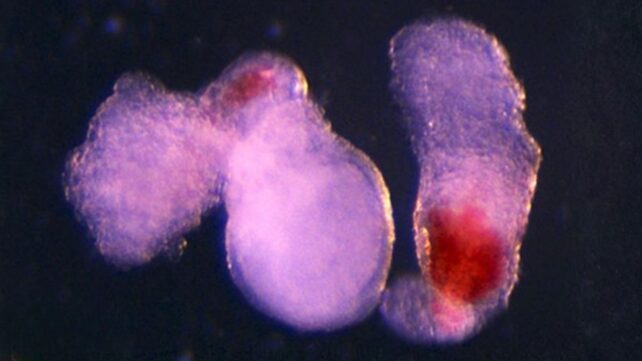Clusters of cells grown in the lab have been encouraged to produce human blood stem cells in a discovery that could one day supplement donations to people with blood disorders like leukemia and lymphoma.
The University of Cambridge-led team behind the innovative process calls these tiny blood factories 'hematoids', which were shown to differentiate into both red and white blood cells just like umbilical cord stem cells.
Made from donated human stem cells, the embryo-like structures lack critical tissues, including the yolk sac and placenta, required for further development.
Related: Regularly Giving Blood Could Benefit Your Own Health, Too
Like an embryo, however, the hematoids develop a few beating heart cells by day eight to keep fluid circulating, producing blood after just two weeks of incubation in their cozy liquid medium.

"It was an exciting moment when the blood red color appeared in the dish – it was visible even to the naked eye," says University of Cambridge developmental biologist Jitesh Neupane.
"This sheds light on how blood cells naturally form during human embryogenesis, offering potential medical advances to screen drugs, study early blood and immune development, and model blood disorders like leukemia."
This is also a more efficient way to generate human blood stem cells in the lab: Prior methods were a lot more high-maintenance, requiring regular supplementation with growth factors and other proteins. At the same time, these new living structures are more self-sustaining.

For now, these hematoids are just prototypes. But the team has high expectations for ongoing development.
"Although it is still in the early stages, the ability to produce human blood cells in the lab marks a significant step towards future regenerative therapies – which use a patient's own cells to repair and regenerate damaged tissues," says developmental biologist Azim Surani, also at the University of Cambridge.
This research was published in Cell Reports.
